The Great Book of Thomas Trevilian - ROXBURGHE CLUB 2000
ConversazioniFine Press Forum
Iscriviti a LibraryThing per pubblicare un messaggio.
1wcarter
The Great Book of Thomas Trevilian
A facsimile of the manuscript in the Wormsley Library
Edited by Nicholas Barker
ROXBURGHE CLUB
LIMITED EDITION of 200 COPIES
FACSIMILE VOLUME
A Facsimile from the manuscript in the Wormsley Library.
Full red buckram with red leather labels and slipcased.
Gilt page tops.
Over 300 of the pages of the 'Great Book' have been reproduced in facsimile by John Parfitt at the Westerham Press.
160 further illustrations, reproduced in black and white and colour, showing the manuscripts, prints, and books, from which Trevilian drew his inspiration., and the embroidery, surviving and preserved in contemporary portraits.
320 pages
COMMENTARY VOLUME
Printed in red and black throughout by Susan Shaw at the Merrion Press on cream wove paper.
Extensively illustrated.
Gilt page tops.
252 pages
2000
Each volume 50.1x31.8cm.
£2200
The Roxburghe Club was founded in 1812 and is the oldest and most exclusive society of bibliophiles in the world. Its membership is limited to 40, chosen from among those with distinguished libraries or collections, or with a scholarly interest in books. Many of the members are the owners of the libraries you drool over when seen in photos.
Each member is expected, upon election to the club, to produce a book at his or her own expense for presentation to the other members. The subject of such books lies entirely at the discretion of the individual member, providing that it lies within the normal scope of the Club’s publications. These books are usually lavishly bound and superbly printed facsimiles of a book in the member’s collection, or borrowed from a library or institution, or new editions of a classic work. Each presentation copy has the name of the member to whom it is presented in red on the list of members that appears at the beginning of each book. Since its foundation, almost 300 volumes have been published on a wide range of subjects and scholarship. The club itself from time to time, has also published books for presentation to the members.
Only 42 copies of each of these books was ever printed (40 for members, one for the club archive and one extra for the commissioning member). After 159 years of tradition, in 1981, it was decided to print 200-300 extra copies of the books for sale to members of the public. These books for the public are issued in cloth covers rather than the half leather used for the members’ copies.
This astonishing giant folio book is one of the 200 copies of the Great Book of Thomas Trevilian available for sale to non-members, most of which have been sold to libraries and institutions.
On 12 September 1616, Thomas Trevilian reached page 456, less than half-way through his Great Book of pictures and texts. Here he drew breath by inserting his name and an extravagant knotwork initial 'T', noting beneath that he was “68 yeares of age'” (this is the only fact we know of his life) in the 14th year of the reign of King James I.
The Great Book reflects Trevilian's life and beliefs and could be considered to be the world’s first attempt at an encyclopaedia. Loyalty to the crown and the Protestant faith were firmly linked as the foundation of his existence and of his life's work. The book in his own words, “is three folde, historicall, propheticall, and evangelicall, the first teaching examples, the second manners, and the laste a spirituall and heavenly institution'” but “it is a miscelane and now otherwise to be respected, not learned, and therefore the easyer to be pardoned”.
There are 12 main sections:-
1 - Almanacs: calendar, astronomical and topographical material (1-90);
2 - Old Testament history from the Creation and Flood to Josiah (91-144)
3 - Kings and Queens of England from Albion to James 1 and Scotland from Robert ii (145-246)
4 - The Godly reformers: lives and portraits (247-264)
5 - 'Princeps Proditorum': verses and portraits of Papist traitors including the Gunpowder Plotters (265-272)
6 - Sheriffs and Lord Mayors of London (273-312)
7 - Pieties, Parables, New Testament scenes, genre sets: Sibyls, Muses, Virtues and Vices, Four Contients, etc. (313-524)
8 - Sets of calligraphic initials and texts (525-572)
9 – “The Green Dragon for Joyners and gardners”: ornaments and knotwork patters (573-654)
10 – “Pottes” and pictures of flowers and trees: the illustrations from Fuchs and the text from Turner (655-879)
11 - Beasts: from Topsell (880-938)
12 – “Drawen Workes”: pen-and-ink designs for black-work embroidery (939-1028).
The last of these is, perhaps, the key to the whole. Thomas Trevilian must have been a draughtsman for professional embroiderers, and the pictures that he drew have all the charm, verve, and simplicity of what is, arguably, the most original and vigorous of the applied arts in Elizabethan and Stuart England. The brilliant unshaded colours and strong outlines of his figures and the simple landscapes filled with flowers that they populate are conceived entirely in terms of needlework.
But embroidery is not the only answer, as other designs must be derived from, or intended to serve as patterns for, wall-paintings or painted cloths or designs for joiners and gardeners.
Trevilian's work, however, was not what we would call original. His pictures are copied and adapted from engraved prints after Dutch artists such as Goltzius, popular woodcut broadsides and ballads, illustrated books such as Topsell's “Historie of Foure-Footed Beastes” and Fuchs's “De historia stirpium”, and others as yet unknown or even lost.
The texts that accompany his drawings are also, for the most part, copied from printed sources, some from the Bible and others from books and broadsides; but some also preserve popular texts and verses that have otherwise been lost.
The most fascinating aspect of Trevilian's work is his copying from printed books and broadsides of which no original copy is known to survive. Several of the moral ballads survive only in the famous Huth collection in the British Library. Others, such as the “Sovereigns of Scotland”, the 'Princeps Proditorum', and “The Green Dragon”, as well as lesser pieces such as the “Winter' Queen's Wedding Procession” or “Dives and Lazarus'” may also have been similar woodcut picture-books.
Trevilian collected, or had access to, the full range of popular images and texts, and his Great Book is able to tell us, more than any other single surviving source, about the immensely wide range of graphic imagery that was available in the book and print shops of London in the 17th.C. He was no slavish copyist, however. Many of his images, especially in the section of Bible stories and texts are of his own invention and even feature himself. He appears, a severe figure, book in hand, with neatly trimmed beard, wearing a dark coat trimmed with fur with a small ruff and a full-brimmed hat with a round crown.
Unfortunately, we know nothing of the Great Book’s history until it is first recorded at Petworth House, Sussex, c1773, in the inventory of George O'Brien Wyndham, 2nd Earl of Egremont (1751-1837). The Wyndhams were the heirs of Trevilian's contemporary Henry Percy, 3rd Earl of Northumberland (1564-1632), which may provide a clue to its origins.
It then passed by descent to Charles Henry Wyndham, 3rd Baron Leconfield, and was sold by auction at Sotheby's, 23 April 1928. It was acquired by the American collector Boies Penrose from The Rosenbach Company during the Second World War and returned to England in 1988 when it was acquired by Sir Paul Getty.
Only a few of the coloured illustrations and some of the black-work embroidery designs have ever been reproduced but now Sir Paul Getty has commissioned a magnificent two-volume monograph by Nicholas Barker with many full-size colour reproductions for presentation to his fellow members of the Roxburghe Club.
The book is also a tribute to the work of the printers and binders who have given it form. Like the original it is bound in two volumes, here in red buckram with red leather labels. Over 300 of the pages of the Great Book have been reproduced in superb facsimile by John Parfitt at the Westerham Press, using up to twelve different colours to achieve a faithful likeness to the original. These have been supplemented with 160 further illustrations, reproduced in black and white and colour, showing the manuscripts, prints, and books, from which Trevilian drew his inspiration, and the embroidery, surviving and preserved in contemporary portraits.
The text has been set in Caslon's Great Primer, cast by Gloucester Typesetting Services, and printed in red and black throughout by Susan Shaw at the Merrion Press. The cream wove paper is Mohawk Superfine 176 gsm. In size, length and sheer quality of manufacture, this is perhaps the greatest monument to the arts of the book at the turn of the twentieth century.

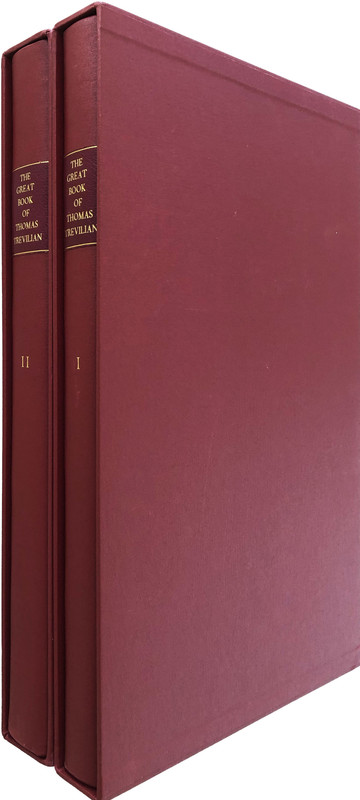

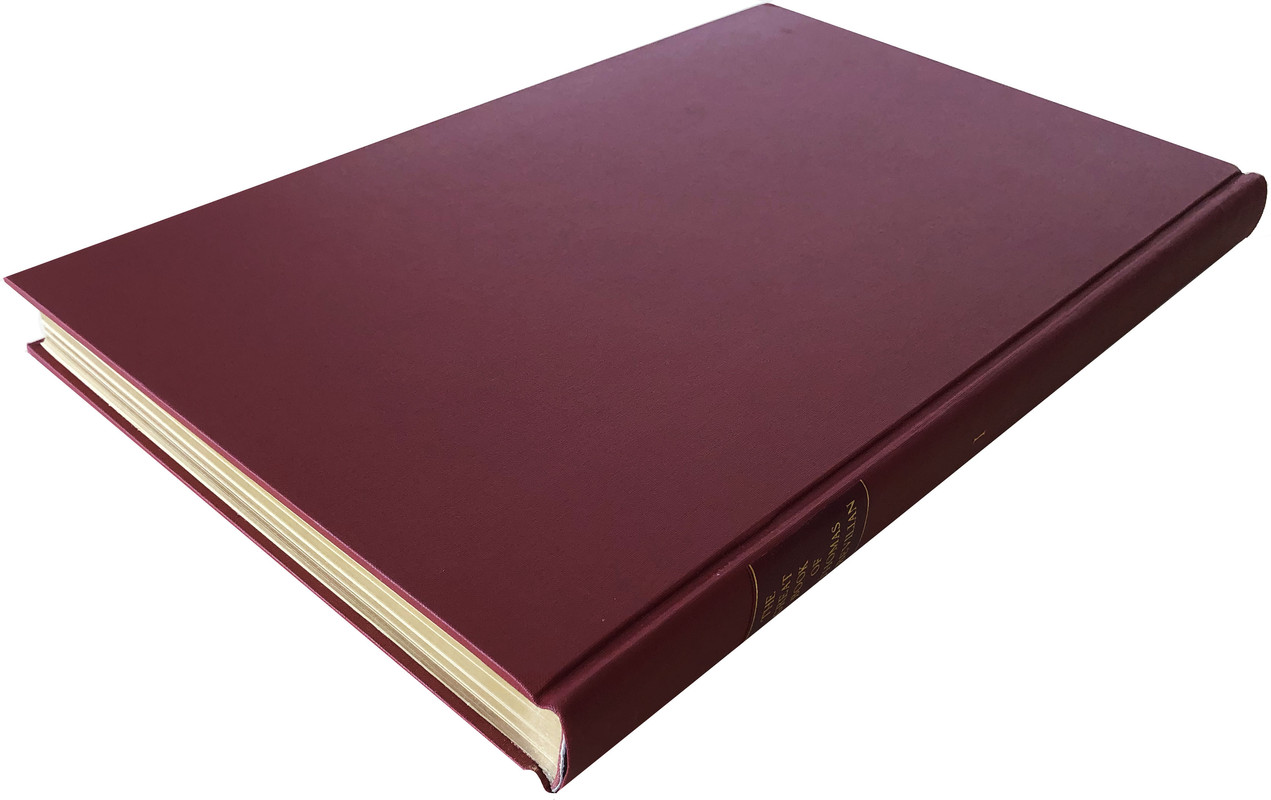

COMMENTARY VOLUME




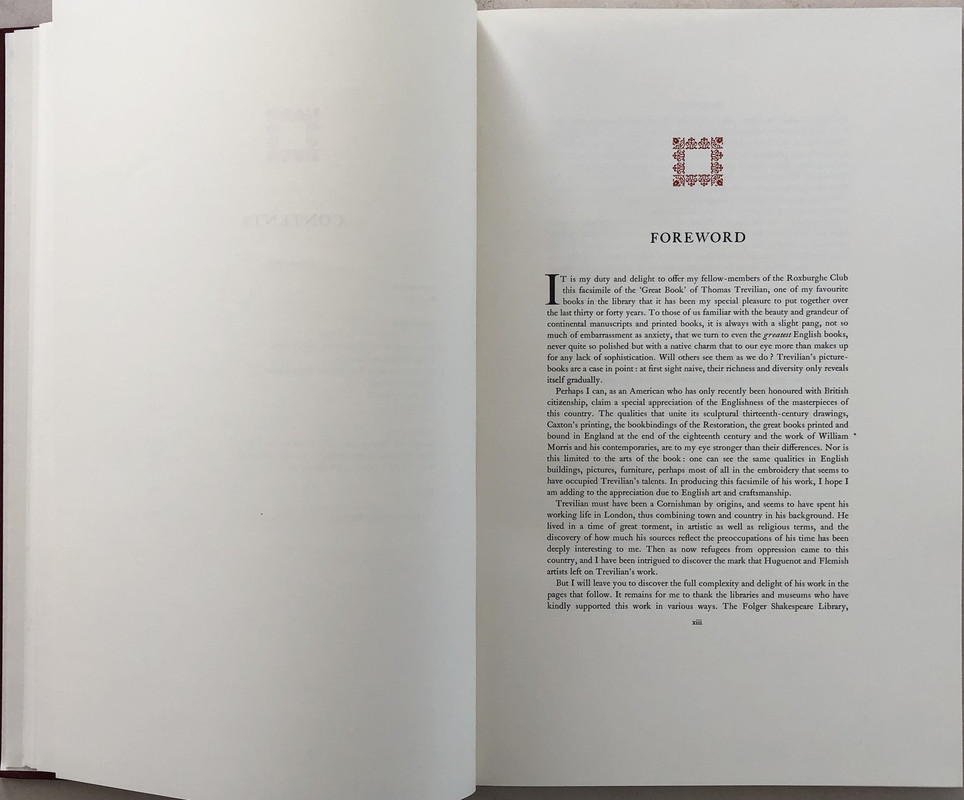

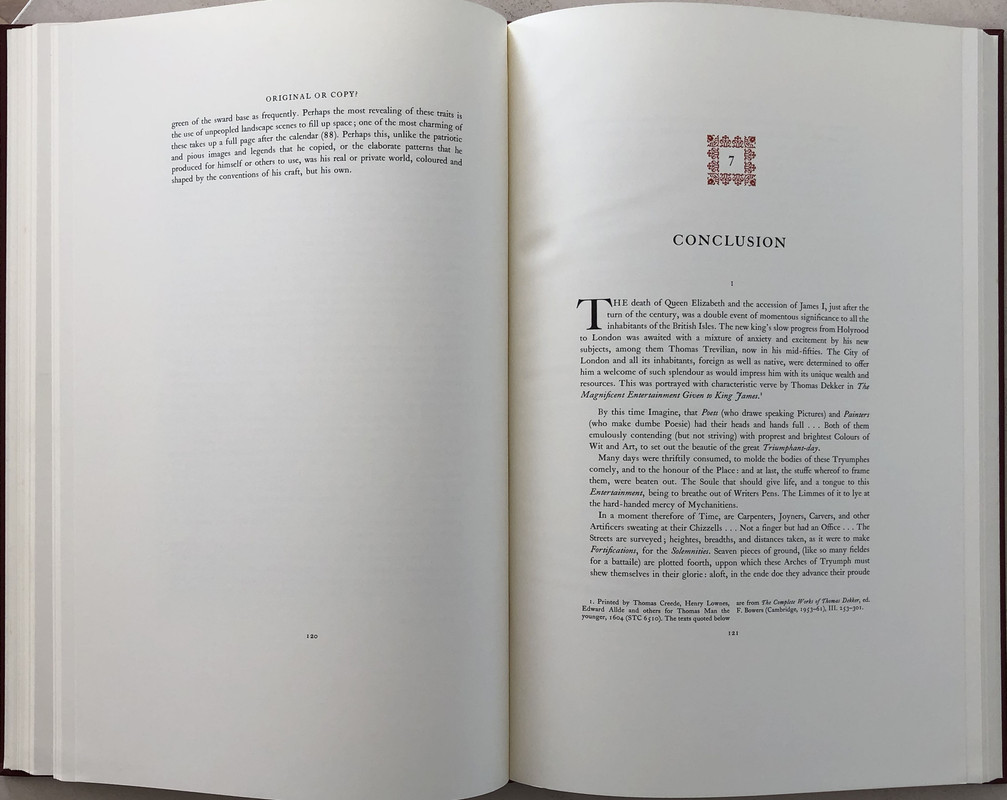

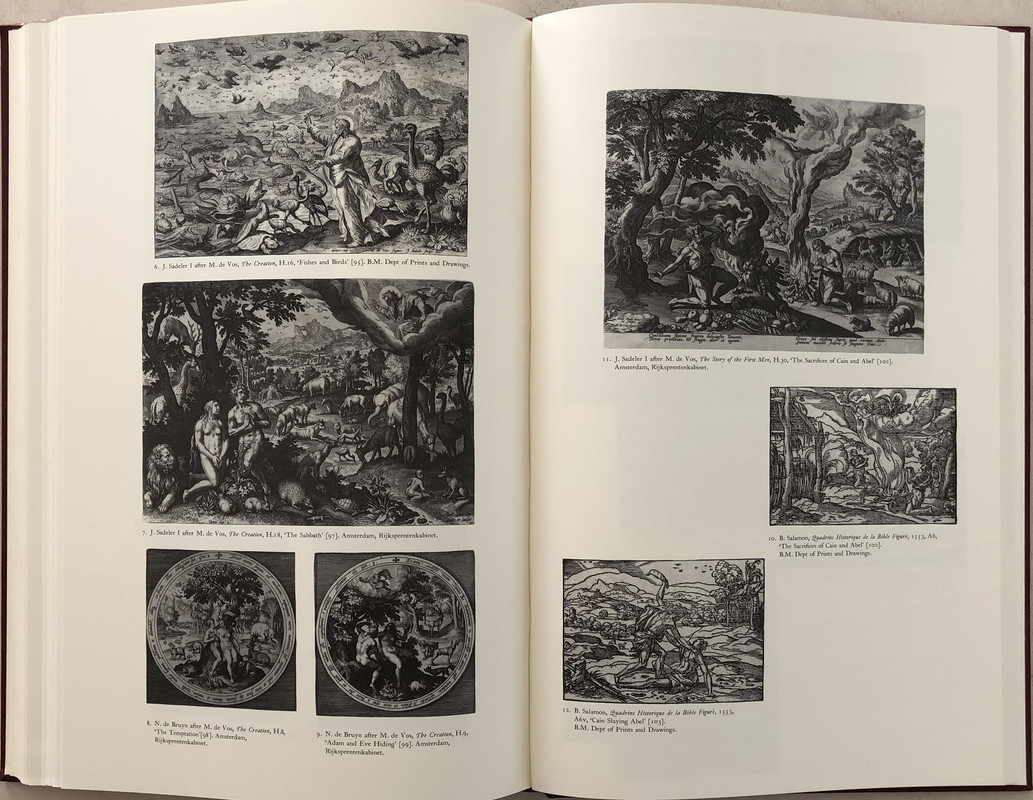



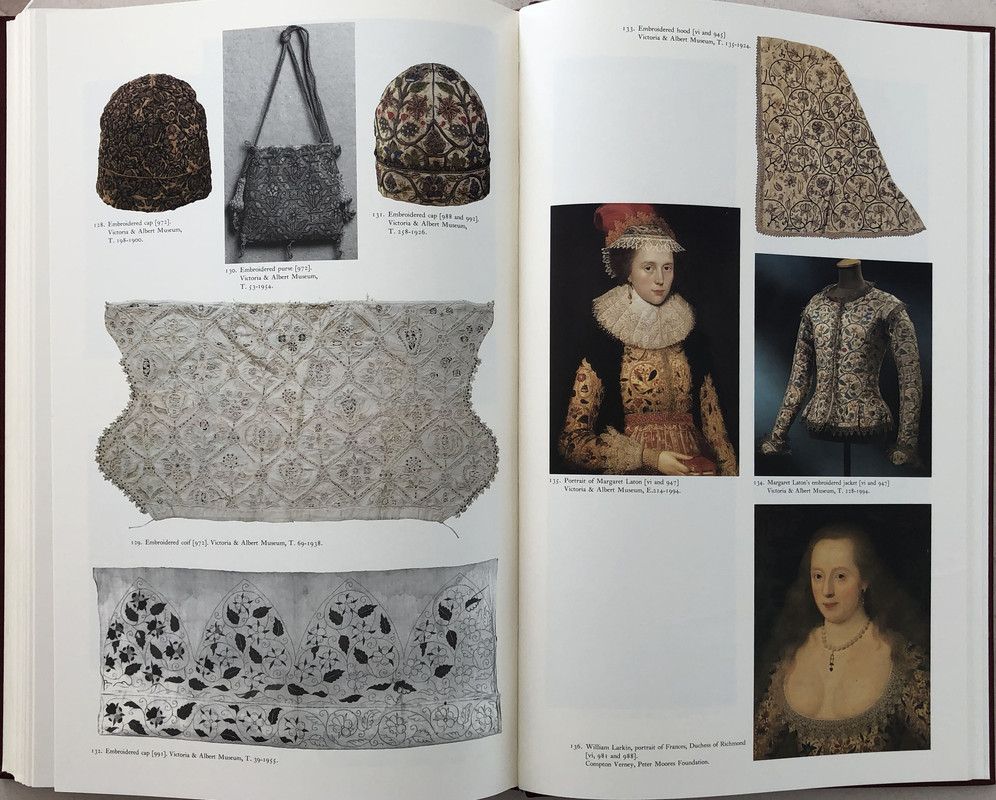

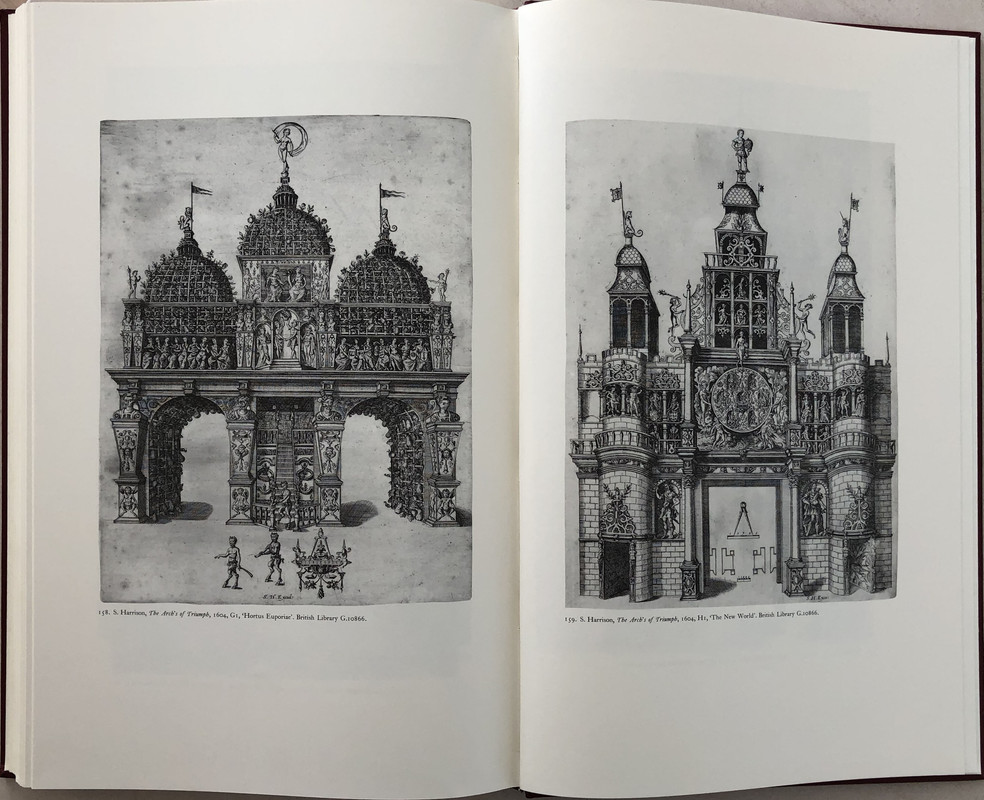
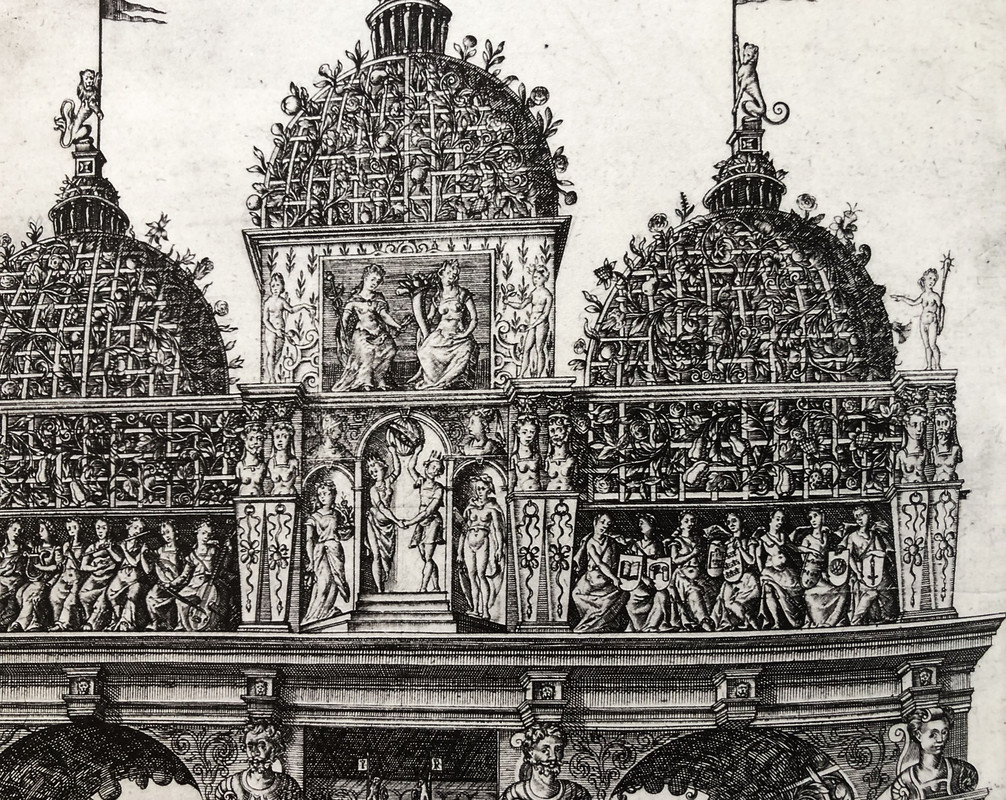
FACSIMILE VOLUME
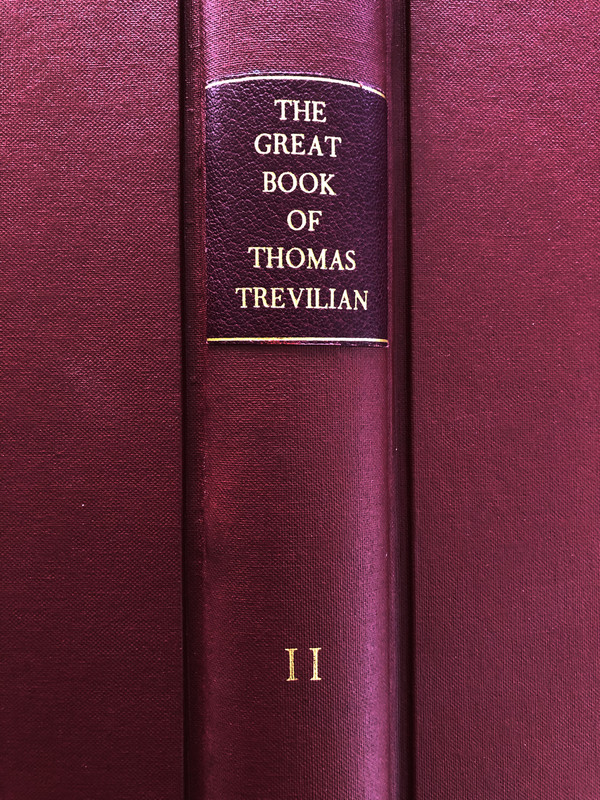






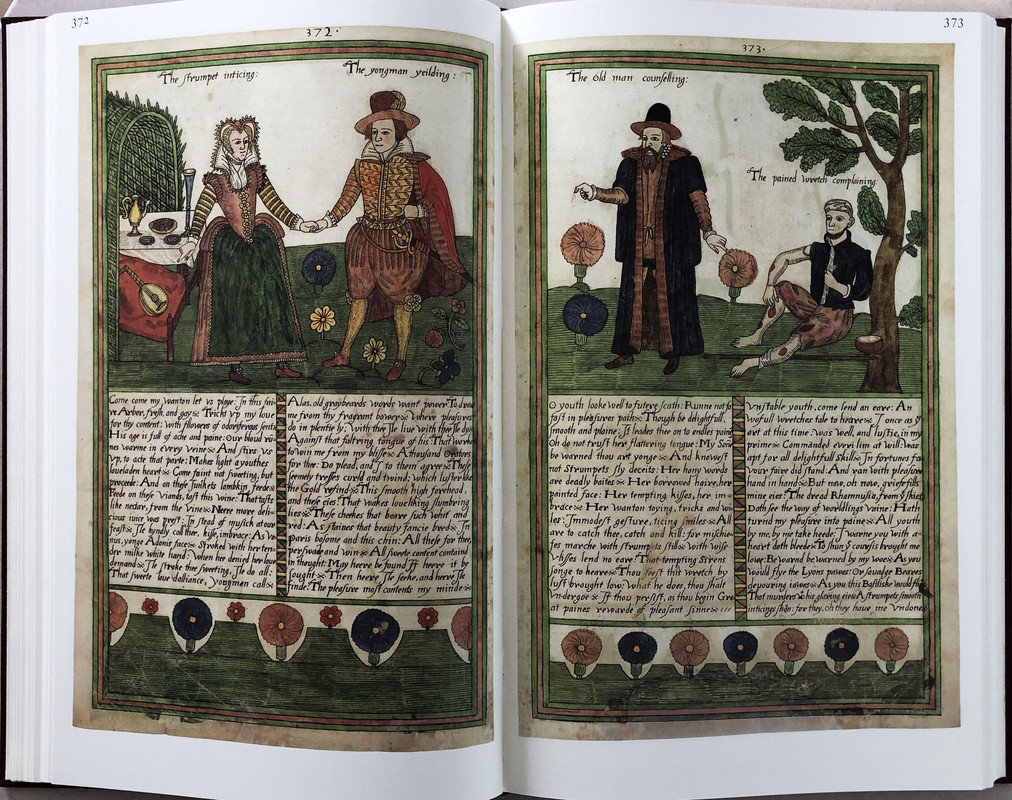




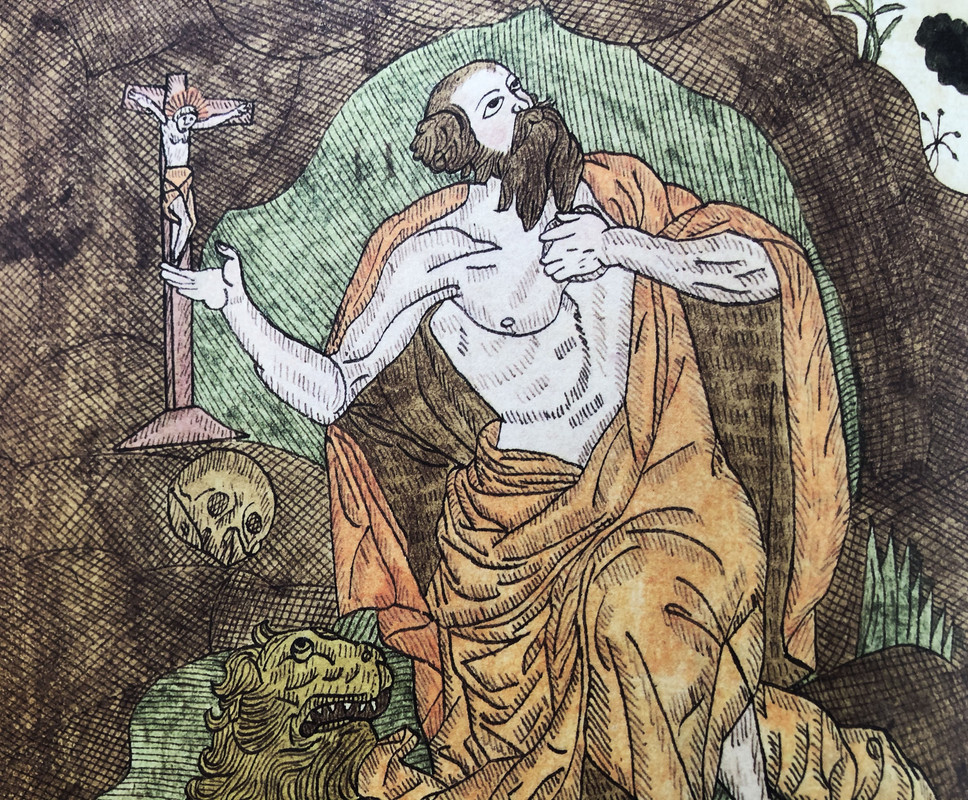



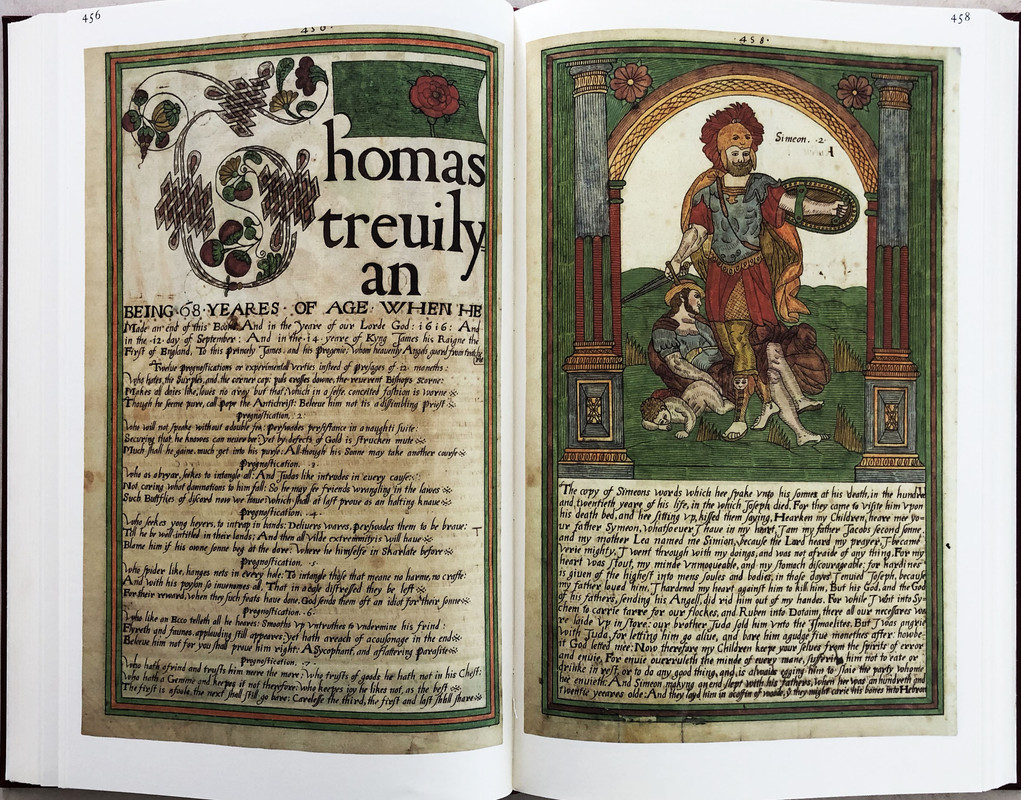



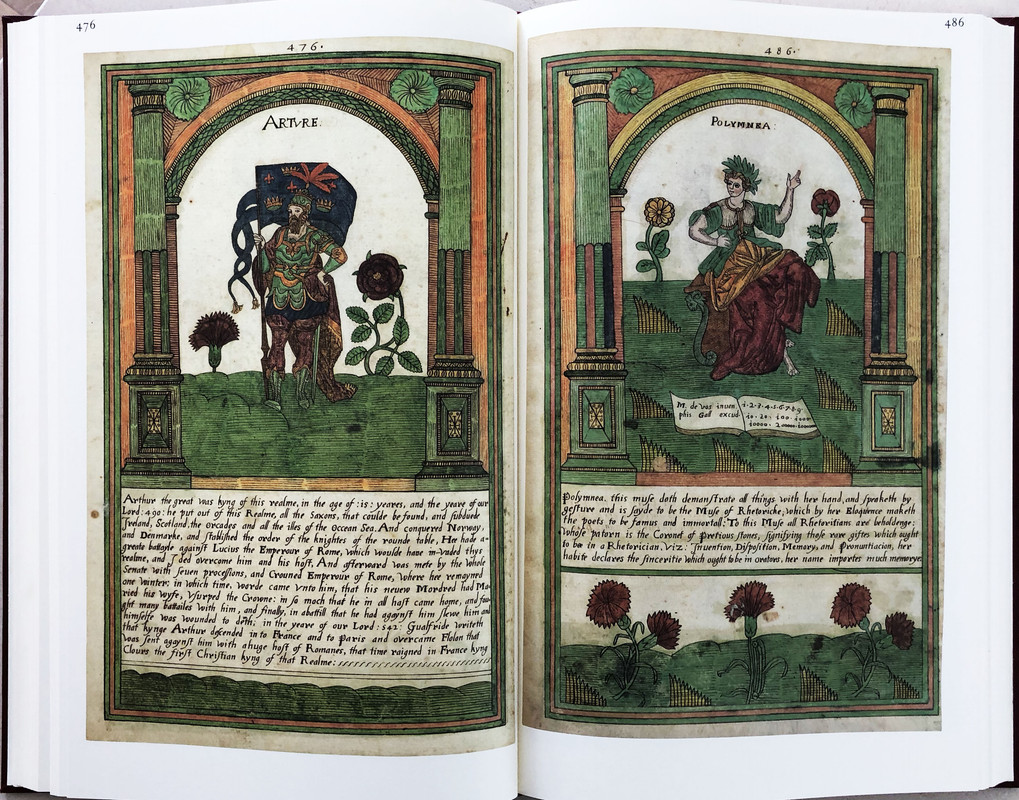


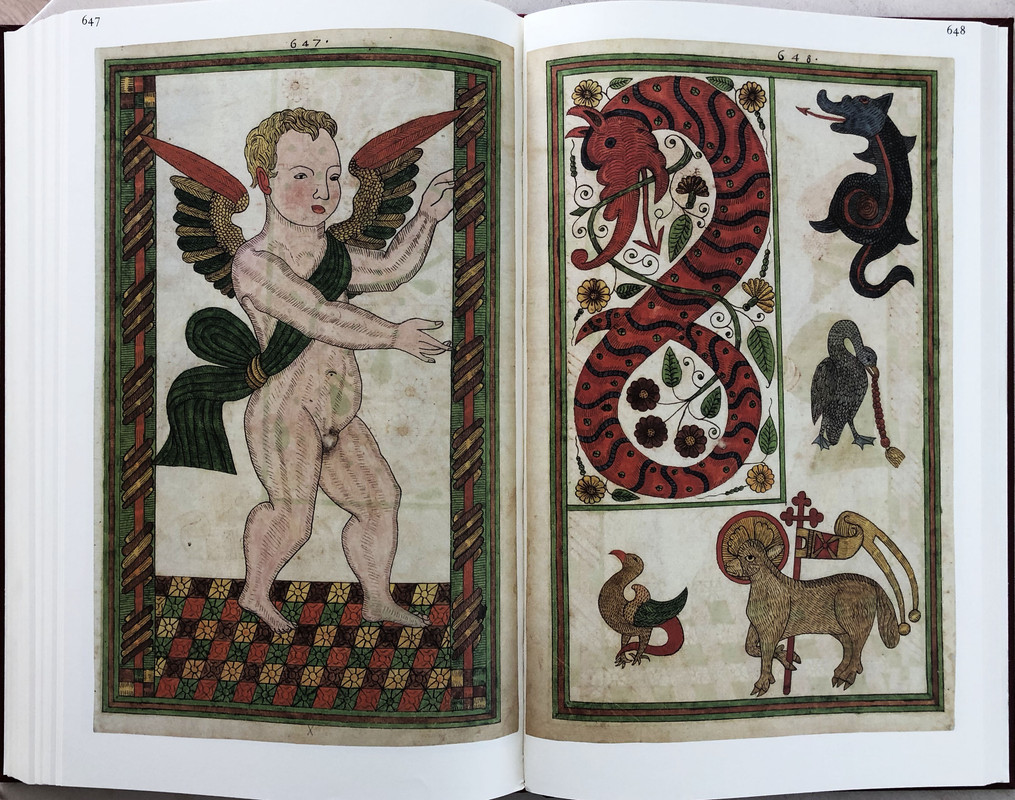

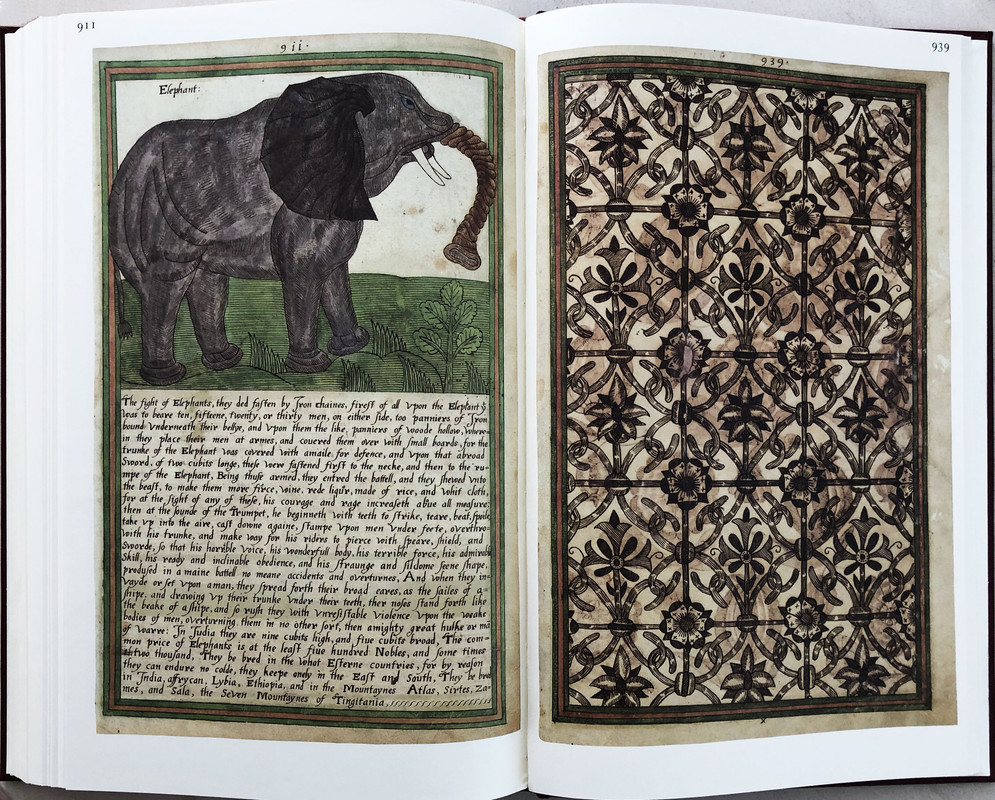

The review of another Roxburghe Club book I own, The Rotz Atlas, can be seen here.
An index of the other illustrated book reviews I have written can be viewed here.
A facsimile of the manuscript in the Wormsley Library
Edited by Nicholas Barker
ROXBURGHE CLUB
LIMITED EDITION of 200 COPIES
FACSIMILE VOLUME
A Facsimile from the manuscript in the Wormsley Library.
Full red buckram with red leather labels and slipcased.
Gilt page tops.
Over 300 of the pages of the 'Great Book' have been reproduced in facsimile by John Parfitt at the Westerham Press.
160 further illustrations, reproduced in black and white and colour, showing the manuscripts, prints, and books, from which Trevilian drew his inspiration., and the embroidery, surviving and preserved in contemporary portraits.
320 pages
COMMENTARY VOLUME
Printed in red and black throughout by Susan Shaw at the Merrion Press on cream wove paper.
Extensively illustrated.
Gilt page tops.
252 pages
2000
Each volume 50.1x31.8cm.
£2200
The Roxburghe Club was founded in 1812 and is the oldest and most exclusive society of bibliophiles in the world. Its membership is limited to 40, chosen from among those with distinguished libraries or collections, or with a scholarly interest in books. Many of the members are the owners of the libraries you drool over when seen in photos.
Each member is expected, upon election to the club, to produce a book at his or her own expense for presentation to the other members. The subject of such books lies entirely at the discretion of the individual member, providing that it lies within the normal scope of the Club’s publications. These books are usually lavishly bound and superbly printed facsimiles of a book in the member’s collection, or borrowed from a library or institution, or new editions of a classic work. Each presentation copy has the name of the member to whom it is presented in red on the list of members that appears at the beginning of each book. Since its foundation, almost 300 volumes have been published on a wide range of subjects and scholarship. The club itself from time to time, has also published books for presentation to the members.
Only 42 copies of each of these books was ever printed (40 for members, one for the club archive and one extra for the commissioning member). After 159 years of tradition, in 1981, it was decided to print 200-300 extra copies of the books for sale to members of the public. These books for the public are issued in cloth covers rather than the half leather used for the members’ copies.
This astonishing giant folio book is one of the 200 copies of the Great Book of Thomas Trevilian available for sale to non-members, most of which have been sold to libraries and institutions.
On 12 September 1616, Thomas Trevilian reached page 456, less than half-way through his Great Book of pictures and texts. Here he drew breath by inserting his name and an extravagant knotwork initial 'T', noting beneath that he was “68 yeares of age'” (this is the only fact we know of his life) in the 14th year of the reign of King James I.
The Great Book reflects Trevilian's life and beliefs and could be considered to be the world’s first attempt at an encyclopaedia. Loyalty to the crown and the Protestant faith were firmly linked as the foundation of his existence and of his life's work. The book in his own words, “is three folde, historicall, propheticall, and evangelicall, the first teaching examples, the second manners, and the laste a spirituall and heavenly institution'” but “it is a miscelane and now otherwise to be respected, not learned, and therefore the easyer to be pardoned”.
There are 12 main sections:-
1 - Almanacs: calendar, astronomical and topographical material (1-90);
2 - Old Testament history from the Creation and Flood to Josiah (91-144)
3 - Kings and Queens of England from Albion to James 1 and Scotland from Robert ii (145-246)
4 - The Godly reformers: lives and portraits (247-264)
5 - 'Princeps Proditorum': verses and portraits of Papist traitors including the Gunpowder Plotters (265-272)
6 - Sheriffs and Lord Mayors of London (273-312)
7 - Pieties, Parables, New Testament scenes, genre sets: Sibyls, Muses, Virtues and Vices, Four Contients, etc. (313-524)
8 - Sets of calligraphic initials and texts (525-572)
9 – “The Green Dragon for Joyners and gardners”: ornaments and knotwork patters (573-654)
10 – “Pottes” and pictures of flowers and trees: the illustrations from Fuchs and the text from Turner (655-879)
11 - Beasts: from Topsell (880-938)
12 – “Drawen Workes”: pen-and-ink designs for black-work embroidery (939-1028).
The last of these is, perhaps, the key to the whole. Thomas Trevilian must have been a draughtsman for professional embroiderers, and the pictures that he drew have all the charm, verve, and simplicity of what is, arguably, the most original and vigorous of the applied arts in Elizabethan and Stuart England. The brilliant unshaded colours and strong outlines of his figures and the simple landscapes filled with flowers that they populate are conceived entirely in terms of needlework.
But embroidery is not the only answer, as other designs must be derived from, or intended to serve as patterns for, wall-paintings or painted cloths or designs for joiners and gardeners.
Trevilian's work, however, was not what we would call original. His pictures are copied and adapted from engraved prints after Dutch artists such as Goltzius, popular woodcut broadsides and ballads, illustrated books such as Topsell's “Historie of Foure-Footed Beastes” and Fuchs's “De historia stirpium”, and others as yet unknown or even lost.
The texts that accompany his drawings are also, for the most part, copied from printed sources, some from the Bible and others from books and broadsides; but some also preserve popular texts and verses that have otherwise been lost.
The most fascinating aspect of Trevilian's work is his copying from printed books and broadsides of which no original copy is known to survive. Several of the moral ballads survive only in the famous Huth collection in the British Library. Others, such as the “Sovereigns of Scotland”, the 'Princeps Proditorum', and “The Green Dragon”, as well as lesser pieces such as the “Winter' Queen's Wedding Procession” or “Dives and Lazarus'” may also have been similar woodcut picture-books.
Trevilian collected, or had access to, the full range of popular images and texts, and his Great Book is able to tell us, more than any other single surviving source, about the immensely wide range of graphic imagery that was available in the book and print shops of London in the 17th.C. He was no slavish copyist, however. Many of his images, especially in the section of Bible stories and texts are of his own invention and even feature himself. He appears, a severe figure, book in hand, with neatly trimmed beard, wearing a dark coat trimmed with fur with a small ruff and a full-brimmed hat with a round crown.
Unfortunately, we know nothing of the Great Book’s history until it is first recorded at Petworth House, Sussex, c1773, in the inventory of George O'Brien Wyndham, 2nd Earl of Egremont (1751-1837). The Wyndhams were the heirs of Trevilian's contemporary Henry Percy, 3rd Earl of Northumberland (1564-1632), which may provide a clue to its origins.
It then passed by descent to Charles Henry Wyndham, 3rd Baron Leconfield, and was sold by auction at Sotheby's, 23 April 1928. It was acquired by the American collector Boies Penrose from The Rosenbach Company during the Second World War and returned to England in 1988 when it was acquired by Sir Paul Getty.
Only a few of the coloured illustrations and some of the black-work embroidery designs have ever been reproduced but now Sir Paul Getty has commissioned a magnificent two-volume monograph by Nicholas Barker with many full-size colour reproductions for presentation to his fellow members of the Roxburghe Club.
The book is also a tribute to the work of the printers and binders who have given it form. Like the original it is bound in two volumes, here in red buckram with red leather labels. Over 300 of the pages of the Great Book have been reproduced in superb facsimile by John Parfitt at the Westerham Press, using up to twelve different colours to achieve a faithful likeness to the original. These have been supplemented with 160 further illustrations, reproduced in black and white and colour, showing the manuscripts, prints, and books, from which Trevilian drew his inspiration, and the embroidery, surviving and preserved in contemporary portraits.
The text has been set in Caslon's Great Primer, cast by Gloucester Typesetting Services, and printed in red and black throughout by Susan Shaw at the Merrion Press. The cream wove paper is Mohawk Superfine 176 gsm. In size, length and sheer quality of manufacture, this is perhaps the greatest monument to the arts of the book at the turn of the twentieth century.





COMMENTARY VOLUME
















FACSIMILE VOLUME



























The review of another Roxburghe Club book I own, The Rotz Atlas, can be seen here.
An index of the other illustrated book reviews I have written can be viewed here.
2grifgon
Amazing. I get excited every time I see one of these posts from you wcarter! Keep them coming please please please.
3Mweb
Thank you for sharing details of this beautiful book.
Heywood Hill are currently selling a Roxburghe Chatsworth Handbook for £75 if it is of interest to anyone. No connection with Heywood Hill , just fortunate enough to have been given a copy as an early Christmas present. https://www.heywoodhill.com/pdf/chatsworth_handbook_prospectus.pdf
Heywood Hill are currently selling a Roxburghe Chatsworth Handbook for £75 if it is of interest to anyone. No connection with Heywood Hill , just fortunate enough to have been given a copy as an early Christmas present. https://www.heywoodhill.com/pdf/chatsworth_handbook_prospectus.pdf
4whytewolf1
Thanks for taking the time to do these posts and share these treasures! Have been very much enjoying back through your past posts.

